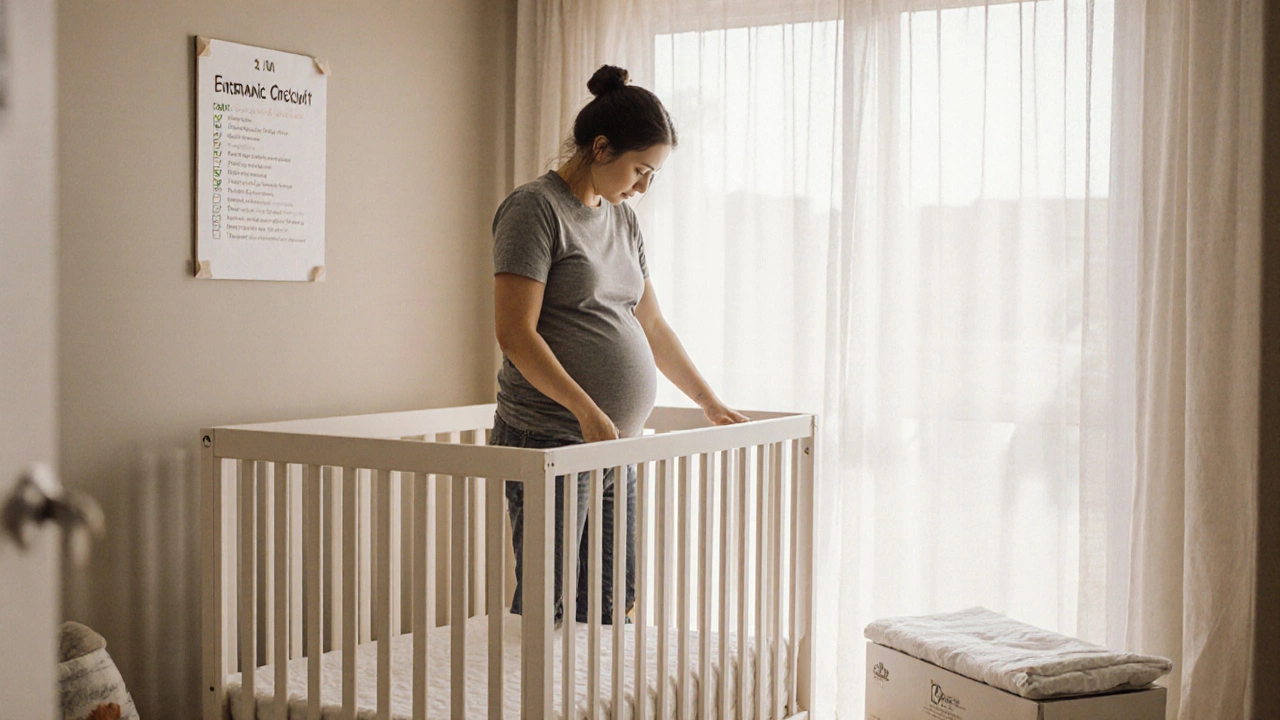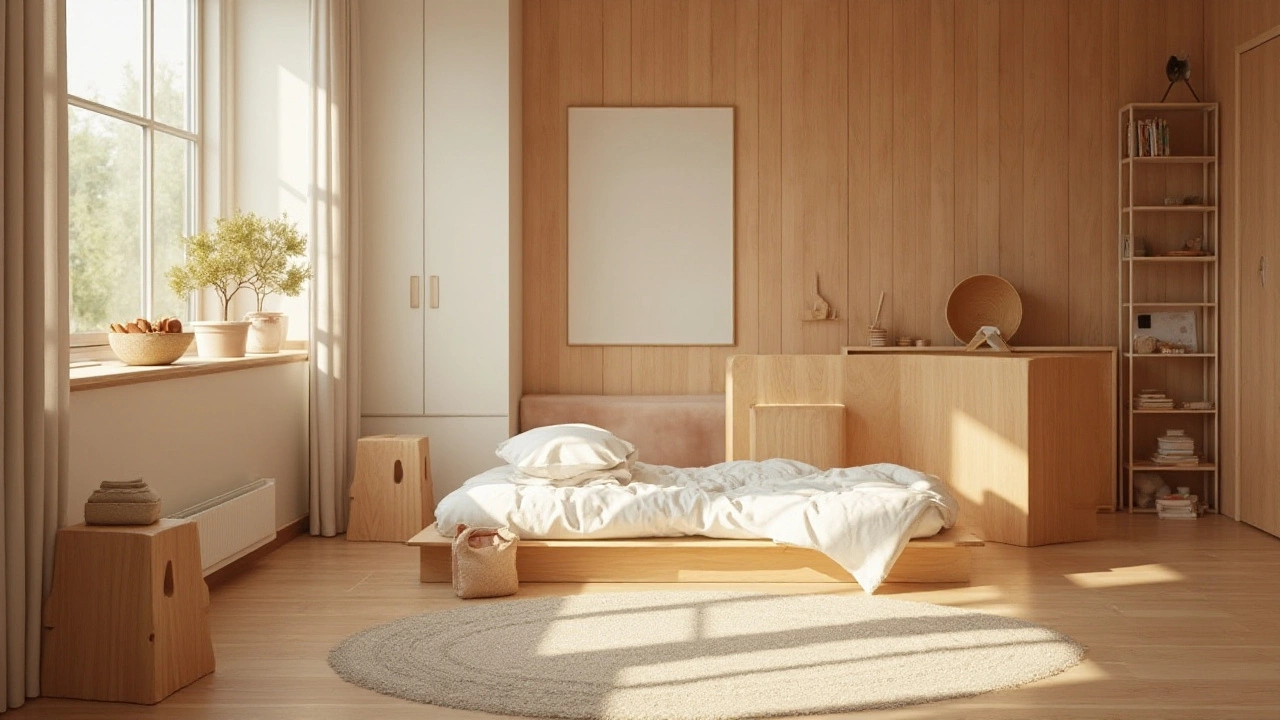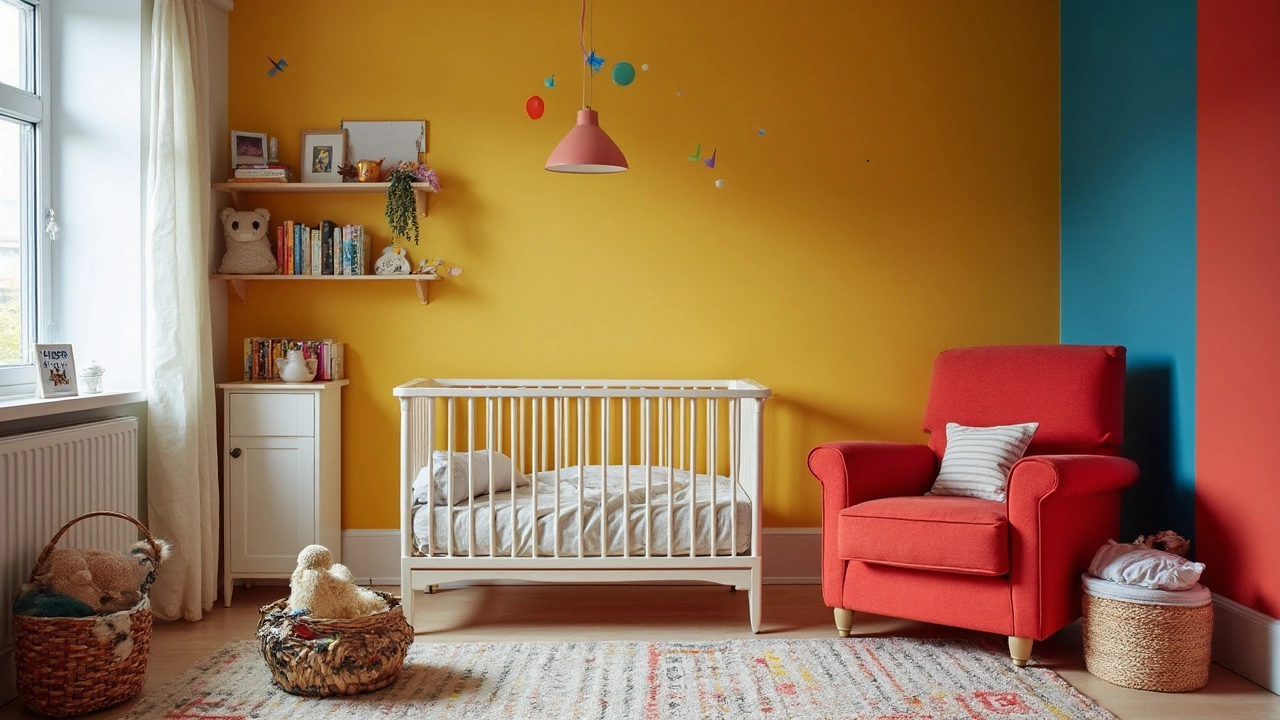When Should You Furnish a Nursery? A Practical Timeline for New Parents

Nursery Prep Timeline Calculator
Track Your Nursery Preparation
Enter your current pregnancy week to see what you should have ready and next steps.
Nursery Timeline
Start Researching
Begin considering essentials: crib, mattress, changing station, glider
Nursery Timeline
Crib Order Deadline
Crib must be ordered by week 26 for timely delivery
Nursery Timeline
Mattress & Bedding
Buy mattress and at least 3 fitted sheets
Nursery Timeline
Changing Station Setup
Get changing table/dresser by week 30
Nursery Timeline
Glider Selection
Choose comfortable glider by week 32
Nursery Timeline
Final Touches
Add decor, lighting, and storage
Your Progress
Next Steps
Safety Check
Essential Checklist
Waiting for your baby to arrive is exciting-but it also comes with a lot of "when should I do this?" questions. One of the biggest is: nursery furniture. Too early, and you risk wasting money if plans change. Too late, and you’re scrambling in the last weeks of pregnancy, exhausted and overwhelmed. The good news? There’s a sweet spot that keeps things calm, budget-friendly, and safe.
Start thinking about nursery furniture between 20 and 24 weeks pregnant
This is when most parents begin seriously considering what they need. By 20 weeks, you’ve likely had your anatomy scan and know the baby’s gender (if you care), and your energy levels are usually at their peak before the third trimester hits. This is the perfect window to start researching, comparing prices, and making a list.
You don’t need to buy everything yet. But you should know what’s essential. A crib, mattress, changing table, and a comfortable glider or rocking chair are the non-negotiables. Everything else-dressers, shelves, night lights, decor-can wait. Start by checking safety standards: make sure any crib you consider meets current CPSC guidelines (no drop-side rails, slats no more than 2 3/8 inches apart). Look for mattresses that fit snugly and are firm. These aren’t things you want to rush at the last minute.
Place your crib order by week 26
The crib is the biggest-ticket item and often takes the longest to arrive. Even if you’re buying from a local store, delivery can take 3-6 weeks. Online orders? 4-8 weeks is common, especially during peak seasons like spring and summer. Some brands have backlogs. If you wait until 30 weeks, you risk your baby arriving before the crib does.
Pro tip: Don’t buy a crib with wheels or adjustable sides unless they’re locked in place. Stability matters more than convenience. Also, skip the fancy convertible cribs unless you’re planning to use them beyond infancy. Many parents end up buying a toddler bed anyway, and the extra cost isn’t worth it.
Buy the mattress and bedding by week 28
A crib mattress isn’t something you can return once it’s opened. That’s why you should buy it before you assemble the crib. You’ll need a waterproof, breathable cover and fitted sheets made from organic cotton or bamboo. Avoid fluffy blankets, pillows, or stuffed animals in the crib-these are SIDS risks. The American Academy of Pediatrics says a bare crib is the safest crib. Keep it simple: one fitted sheet, one thin sleep sack, and nothing else.
Buy at least three fitted sheets. You’ll go through them fast. Spit-up, diaper leaks, and accidents happen daily. Wash them weekly. Don’t wait until you run out.
Get the changing table and dresser by week 30
By week 30, you’re likely feeling less mobile. Lifting heavy boxes or assembling furniture gets harder. This is the time to get your changing table and dresser delivered and set up. A changing table with built-in storage saves space and keeps wipes, diapers, and creams within reach. But if you’re tight on space, a dresser with a changing pad on top works just as well. Just make sure it’s anchored to the wall. Babies become surprisingly strong and curious by six months.
Don’t forget the diaper pail. A good one with a foot pedal and odor lock makes life easier. You’ll use it every 2-3 hours for the first few months.

Choose the glider or rocking chair by week 32
This is the piece of furniture you’ll spend the most time in. Not just for feeding-also for soothing, rocking, and late-night cuddles. You need something that supports your back, has armrests, and reclines slightly. Avoid stiff, wooden chairs. They’re pretty but not practical. A plush glider with a matching ottoman is worth the investment. You’ll use it for months, maybe even years.
Test it before you buy. Sit in it for at least 10 minutes. Lean back. Rock. See if your feet touch the floor. If you’re buying online, read reviews that mention long-term comfort. Many parents regret choosing style over support.
Final touches: Decor, storage, and lighting by week 34-36
Now you’re in the home stretch. This is when you add the little things: a night light that doesn’t glow too bright, a wall clock to track feeding times, a small rug to catch dropped bottles, and shelves for books or toys. Avoid heavy wall art or shelves above the crib. Things fall. Babies reach. Keep it low and safe.
Use under-bed storage bins for out-of-season clothes. Hang a laundry hamper near the changing area. Put a small basket on the floor for stuffed animals. These small systems save you from chaos later.
What NOT to do
Don’t wait until the baby is born to set up the nursery. New parents are sleep-deprived, emotionally raw, and physically drained. Setting up a crib at 2 a.m. while your baby cries is not the way to start parenthood.
Don’t buy everything at once. Resist the urge to buy matching sets. You’ll spend more than necessary. Buy what you need, when you need it. A crib, mattress, changing station, and glider are enough to start. Add the rest as you go.
Don’t use secondhand cribs unless you’re 100% sure they meet current safety standards. Cribs older than 2011 may have been recalled. Check the CPSC recall list before you accept a hand-me-down.

What if you’re adopting or fostering?
If you’re adopting or fostering, timelines change. You might get a call with only a few days’ notice. In that case, have a basic nursery ready in advance. Keep a crib, mattress, changing pad, and a few diapers and onesies packed and ready to go. You don’t need a fully decorated room-you need a safe, clean space. You can decorate later.
What if you’re on a tight budget?
You don’t need a Pinterest-perfect nursery to raise a healthy baby. Look for sales at the end of summer or winter. Check Facebook Marketplace or Buy Nothing groups. Many parents sell gently used nursery furniture. Ask friends or family if they have extras. A crib from 2020 that’s been stored properly is still safe. A dresser from a thrift store? Clean it well and paint it if you want. Focus on function, not form.
Remember: Your baby doesn’t care if the walls are painted pastel blue or if the mobile spins slowly. They care that they’re fed, held, and safe. The rest is just noise.
Final checklist: What to have ready by week 36
- Crib assembled and tested
- Mattress and fitted sheets (3+)
- Changing table or dresser with pad
- Diaper pail
- Glider or rocking chair with ottoman
- Safe lighting (dim, warm tone)
- Storage bins for clothes and blankets
- Wall anchors for heavy furniture
- Smoke and carbon monoxide detectors installed
If you’ve checked all these boxes by week 36, you’re ahead of 80% of new parents. You’ve avoided the last-minute panic. You’ve saved money by buying smart. And most importantly-you’ve created a space that’s safe, simple, and ready for your baby’s first breath.
Is it safe to use a secondhand crib?
Only if it meets current safety standards from the CPSC (post-2011). Older cribs may have drop-side rails, loose hardware, or unsafe slat spacing. Always check the CPSC recall list before using any used crib. If you can’t confirm its history, buy new.
Do I need a changing table?
No, but you do need a safe, stable surface to change diapers. A dresser with a padded changing top works just as well-and doubles as storage. Just make sure it’s anchored to the wall. Many parents skip the changing table entirely and use a waterproof pad on the floor or bed.
When should I wash baby clothes before use?
Wash all baby clothes, blankets, and bedding before the baby arrives. New fabrics often contain chemicals or dust from manufacturing. Use a gentle, fragrance-free detergent. Wash in hot water and dry on high heat to kill germs. This step is simple but often forgotten.
Can I set up the nursery in a different room?
Yes. Many parents start with the nursery in a spare bedroom, then move the baby to their room after a few weeks or months. Some even use a bassinet in the parents’ room for the first 6 months, as recommended by the AAP. The key is having a safe, quiet, and consistent sleep space-not the room’s location.
How much should I spend on nursery furniture?
There’s no fixed amount, but most families spend between $500 and $1,500 on essential nursery furniture: crib, mattress, changing station, and glider. You can do it for less with smart shopping. Prioritize safety and function over matching sets or designer brands. Your baby won’t remember the color of the walls-they’ll remember being held.

